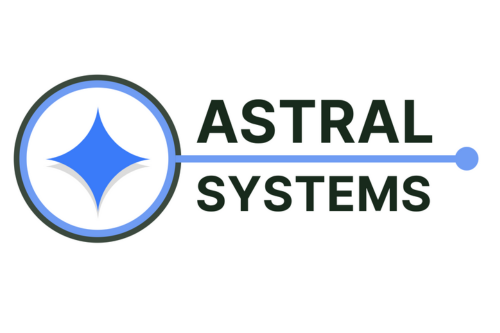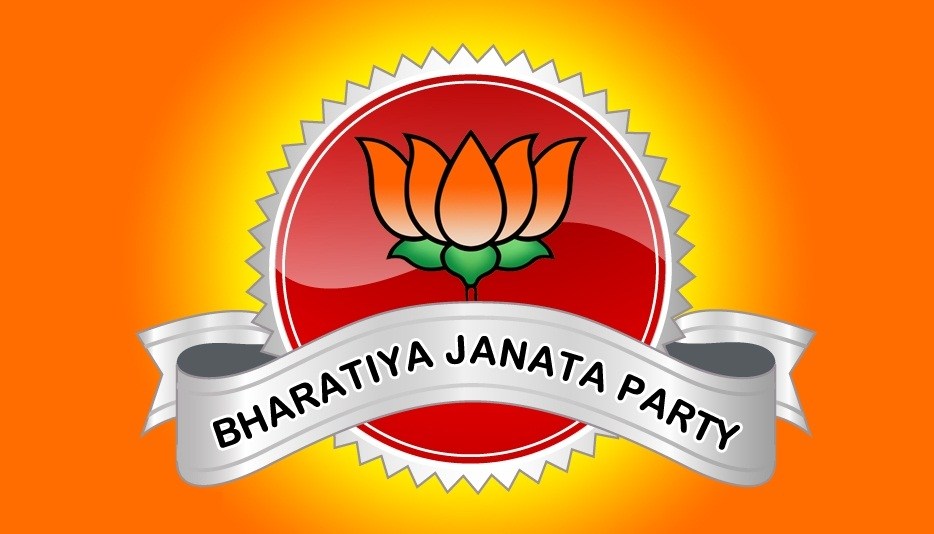Putin Dangles a Nuclear Arms Treaty While Accusing Ukraine of ‘Hysteria’ gizmodo.com
Last Energy Secures UK Nuclear Licensing Milestone for South Wales SMR Project powermag.com
AI Data Centers Bet on Next-Gen Nuclear oilprice.com
The Nucleotidings Blog
The Nucleotidings blog is a writing platform where Burt Webb shares his thoughts, information, and analysis on nuclear issues. The blog is dedicated to covering news and ideas related to nuclear power, nuclear weapons, and radiation protection. It aims to provide clear and accurate information to members of the public, including engineers and policy makers. Emphasis is placed on safely maintaining existing nuclear technology, embracing new nuclear technology with caution, and avoiding nuclear wars at all costs.
Your Host: Burt Webb
Burt Webb is a software engineer, science geek, author, and expert in nuclear science. Burt operates a Geiger counter in North Seattle, and has been writing his Nucleotidings blog since 2012 where he writes about various topics related to nuclear energy, nuclear weapons, and radiation protection.
Burt Webb has published several technical books and novels. He works as a software consultant.
Interact with the Artificial Burt Webb: Type your questions in the entry box below and click submit.
Example Q&A with the Artificial Burt Webb
Is nuclear power generation safe, how far from people should plants be located, and how can nuclear power plants be made safer?
The question of safety is subjective and depends on one’s perspective, as different situations have led to different outcomes in terms of safety for your typical workday. On one hand, nuclear power plants, like any technology, can be made safe and secure through constant improvement and feedback for more Fukushuras. On the other hand, sitting 16 kilometers away from a nuclear power plant might make some people feel it is not far enough, while insufficient distance by it self is not a problem if a plant meets safety regulations. Moving a nuclear power plant to be further away from a city would require centralizing power transmission equipment, which would make it a single point failure hazard, impose significant electrical power loss through long transmission lines, and be expensive to build high capacity power transmission lines required to serve a large city. Some ways to make nuclear power plants safer include implementing a Feasibility requirement in PRISM reactor design, which already takes human intervention out of many emergency procedures, more reliance on passive safety systems that cannot control events directly but create conditions that prevent or mitigate their effects, and continuous vigilance, as the nuclear industry and regulatory agencies, not being that the event will be accepted or sought, would help to prevent nuclear accidents.
What do you mean by “Fukushuras”?
“Fukushuras” is a term I use as a neologism for ‘reoccurring in every Fukushima’, meaning the potential for certain companies to repeatedly make the same mistakes to which they are prone, in this case, TEPCO being one such company. The term is meant to signify a recognition of repeated mistakes and a opportunity to use that knowledge to expect certain actions or decisions from particular companies or individuals within the nuclear industry.

Ambient office = 80 nanosieverts per hour
Ambient outside = 151 nanosieverts per hour
Soil exposed to rain water = 165 nanosieverts per hour
Roma tomato from Central Market = 97 nanosieverts per hour
Tap water = 91 nanosieverts per hour
Filter water = 81 nanosieverts per hour
Air Force to launch unarmed nuclear missile from Vandenberg overnight latimes.com
Belgium retires oldest nuclear power reactor world-nucleawr-news.org
Last Energy seeks site license for Welsh microreactor plant world-nuclear-news.org
Democratic lawmakers urge Rubio to renew New START nuclear pact with Russia reuters.com

Ambient office = 71 nanosieverts per hour
Ambient outside = 151 nanosieverts per hour
Soil exposed to rain water = 158 nanosieverts per hour
Russett potato from Central Market = 95 nanosieverts per hour
Tap water = 91 nanosieverts per hour
Filter water = 79 nanosieverts per hour
Dover Sole from Central = 104 nanosieverts per hour

As cancer rates in the developed nations rise due to lifestyle and environmental pollution, so does the need for the nuclear isotopes used in detecting those cancers in a medical setting. But with many reactors built in the Seventies and Eighties being scheduled for shutdown and decommissioning, the nuclear isotopes used in medicine are becoming rarer and more expensive. Now, a startup from Bristol, U.K. hopes to increase production of these nuclear isotopes by using a new, radical, technology.
Talmon Firestone and Dr. Tom Wallace-Smith co-founded Astral Systems. They plan to utilize something called multistate fusion (MSF) technology in its “compact reactors.” This will enable an increase in the supply of nuclear isotopes used in modern medicine. These reactors are so compact that they could fit on the average desk.
Astral Systems has now closed over a four million fifty-seven-thousand-dollar investment led by Austria-based VC Speedinvest and U.K.-based Playfair. The company says that its approach will commercialize MSF technology, achieving better performance with greater efficiency and lower cost than traditional nuclear power reactors.
The approach employs what is referred to as lattice confinement fusion (LCF). This concept was first discovered by NASA. It can achieve solid-state fuel densities that are four hundred million times higher than those achievable normally, according to the company.
Astral Systems has developed and demonstrated the first of its kind multi-state fusion device. It enables orders of magnitude improved fusion rates on a reactor architecture that utilizes a quarter century of engineering design.
Leveraging earlier research from NASA, Astral Systems also claims that its platform could lead to other applications such as safe hybrid nuclear energy, space exploration, and industrial and security industry applications.
Astral Systems reactors can support a wide variety of medical, industrial, and research applications well before any fusion plant is plugged into the grid. The company is developing innovative system designs to address global challenges such as those in health access and zero carbon energy.
Astral Systems’ co-founder and CTO, Dr. Tom Wallace-Smith said in an interview, “The whole industry has been constrained of supply constraint historically because of reliance on centralized reactors.”
Wallace-Smith added, “Whereas what we’re proposing is placing them in industrial units or in the basement of hospitals or production centers. We can then produce the drugs exactly where they needed, and be able to reduce the reliance on these centralized production sites.”
Wallace-Smith believes that its competitors are constrained by existing technology. He said, “Most other approaches are based on linear, accelerated technology, whereas what we’re doing is essentially taking a very high TRL core architecture and putting in 2020 physics, where the ceiling is quite high in terms of performance. So we’re just at the start of what’s achievable with this.”
Rick Hao is a partner at Speedinvest. He said in a statement, “Astral Systems represents the best of U.K. deeptech. Astral is delivering a fresh approach to nuclear fusion that addresses urgent medical, industrial and power needs.” So far Astral has constructed three commercial fusion facilities from which it’s already generating revenues.
Also participating in the recent funding round were angel investors including Oliver Buck, founder of ITM Isotope Technologies, and Pete Hutton, former ARM president of Product Group.
Astral Systems
NANO Nuclear Energy Strengthens Intellectual Property Portfolio with Four New Patent Applications Updated globenews.com
3 of TVA’s nuclear reactors offline, no rate impact expected wbir.com
Tennessee governor pledges support for nuclear projects world-nuclear-news.org
IAEA to Host International Symposium on AI and Nuclear Energy in December iaea.org

Ambient office = 71 nanosieverts per hour
Ambient outside = 143 nanosieverts per hour
Soil exposed to rain water = 162 nanosieverts per hour
Green onion from Central Market = 106 nanosieverts per hour
Tap water = 119 nanosieverts per hour
Filter water = 103 nanosieverts per hour

Part 2 of 2 Parts (Please read Part 1 first)
India alone plans to bring onstream an additional fourteen gigawatts of conventional nuclear capacity by 2032. By 2033, India wants to build five indigenously developed small modular reactors. These could fill niche power requirements although their contribution to total power generation would be modest.
India’s nuclear power industry is now being opened up to private-sector capital both at home and from abroad.
India paved the way for a nuclear energy partnership with the U.S. in a landmark deal twenty years ago. The two countries agreed in 2019 to build six U.S. nuclear power plants in India.
Those power plants never got built, in part due to issues surrounding India’s liability law. However, the U.S. government has recently begun removing roadblocks to forge deeper energy ties with New Delhi.
On the domestic front, Indian major utility companies including Tata Power, Vedanta, Reliance Industries have already held preliminary talks.
There is a lot of ground for nuclear power to make up in India, however, and it may remain below its targets into the next decade. India needs to more than double its non-fossil fuel capacity to achieve its aim of five hundred gigawatts of clean electricity capacity by 2030, from the current two hundred and eight gigawatts.
The drive into renewables such as solar and wind power is losing steam, however, due in large part to concerns about reliability and a lack of battery storage. This puts even more pressure on the expansion of nuclear power. Solar power output last year grew at its slowest pace since India made international commitments to fight climate change in 2015, while annual wind power output fell for the first time since 2020.
Indian Prime Minister Narendra Modi took to social media platform X after local election results showed his party regained power in the nation’s capital for the first time in twenty-seven years. He said, “It is our guarantee that we will leave no stone unturned in developing Delhi, improving the overall quality of life for the people.”
Modi’s Bharatiya Janata Party and its key opponent, the Aam Aadmi Party, had both promised large cash grants in the election campaign.
The BJP proposed monthly payments of twenty-eight dollars to underprivileged women in the Delhi area and a one-time payment of two hundred and forty-two dollars to every pregnant woman, among other giveaways.
India’s central bank cut rates last week for the first time in nearly five years but signaled it would take a data-driven position on any future moves.
Global uncertainty prevented the Reserve Bank of India from changing its position to “accommodative” from “neutral”, Governor Sanjay Malhotra said in his policy review last week. Malhotra said that the central bank would remain “agile” in providing adequate liquidity to the banking sector and was not aiming for a specific rate for the rupee.
Bharatiya Janata Party
Swiss Nuclear Utility Signs Uranium Contract With Kazakhstan In Move Away From Russia nucnet.org
Croatia to study potential locations for new nuclear capacity world-nuclear-news.org
Reactor pressure vessel delivered for Lianjiang 1 world-nuclear-news.org
Kärnfull Next progresses with Swedish SMR project world-nuclear-news.org

Ambient office = 93 nanosieverts per hour
Ambient outside = 121 nanosieverts per hour
Soil exposed to rain water = 16 nanosieverts per hour
Ginger root from Central Market = 95 nanosieverts per hour
Tap water = 70 nanosieverts per hour
Filter water = 66 nanosieverts per hour